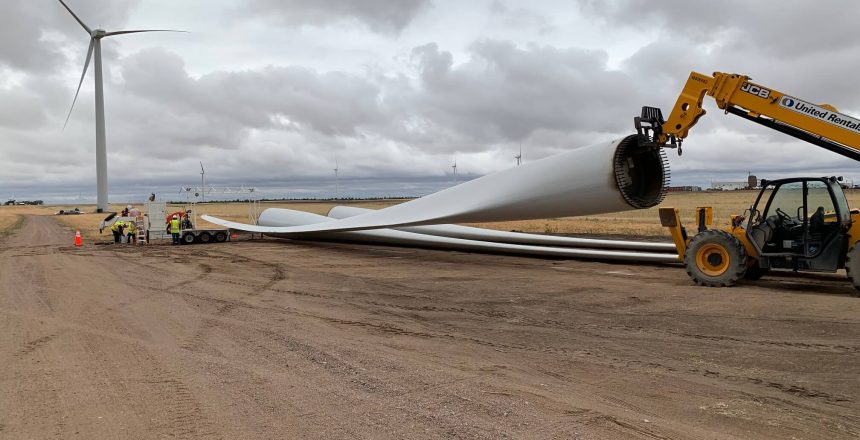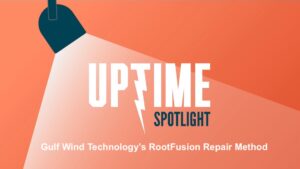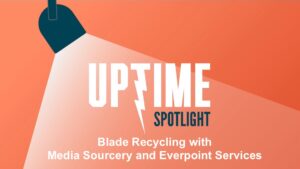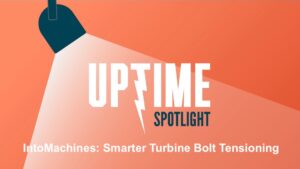Massive stacks of wind turbine blades in landfills are a public relations nightmare – just search “Turbine Blade Graveyard;” we guarantee a headache. The very real environmental repercussions threaten the industry and the planet. The wind energy industry must promote and improve wind turbine blade recycling – and, it’s happening.
Here’s a look at some of the wind turbine blade recycling and environmental sustainability work going on now.
Listen to our interview with Chris Howell of Veolia, and find out how that company is keeping turbine materials in the energy cycle, and out of wind turbine blade cemeteries.
Building More Sustainable Turbine Blades
This summer, Siemens Gamesa announced that it had produced six 81-meter (265 feet) blades that are “fully recyclable,” primarily thanks to a change in the type of epoxy used. The company has said that it plans to install the blades early in 2022.
And while that’s a positive step, countless blades now in use (or in storage, or in landfills) aren’t necessarily being recycled. Composite materials are notoriously difficult to break down – hence the importance of the new epoxy resin that Siemens has highlighted in its press releases.
Extending the life of wind turbine blades also improves sustainability.
But the good news is, although it’s not easy, old wind turbine blades are recyclable.
Because composite blades are combination of different materials, there are inherent chemical and physical challenges in separating those materials. However, because the materials have a BTU value, and most of the materials are non-hazardous, they can be used in cement kilns.
“Utilizing this material as an engineered fuel or what we call repurposed engineered materials (REM) for cement processing worked very, very well,” said Chris Howell, Sr. VP of Recycling Operations at Veolia.
“Every blade is uniquely different, depending upon who manufactures it,” — Chris Howell, Sr. VP of Recycling Operations at Veolia. But the blades are recyclable. Howell describes how Veolia and GE Renewables are transforming wind turbine blade recycling.
In fact, separating and processing the material to use as fuel and cement mix – as complicated as it is – may be easier than the logistics required to disassemble, transport, and shred the turbine blade material.
Veolia uses a co-processing solution that has proven effective in Europe to turn the blades into raw material. Once the blade material has been shredded (typically at a Veolia plant in Missouri) the REM is ready to use.
That REM can go into kilns to replace the coal, sand and clay used to make cement. According to Veolia, more than 90% of the blades are reused: 65% as raw material in the cement plants, and 28% transformed into energy required for the chemical reaction in the kiln.
Of course, the process itself uses a lot of CO2.
Veolia and GE: Better Logistics, Smaller Carbon Footprint
Working with GE and other partner companies, Veolia is addressing the very complex problem from multiple angles. The company uses a multi-step shredding process, for example, to address the very practical roadblock of how to transport the decommissioned blade. By breaking it into raw materials, it can be moved in a semi-truck instead of on an oversized flatbed.
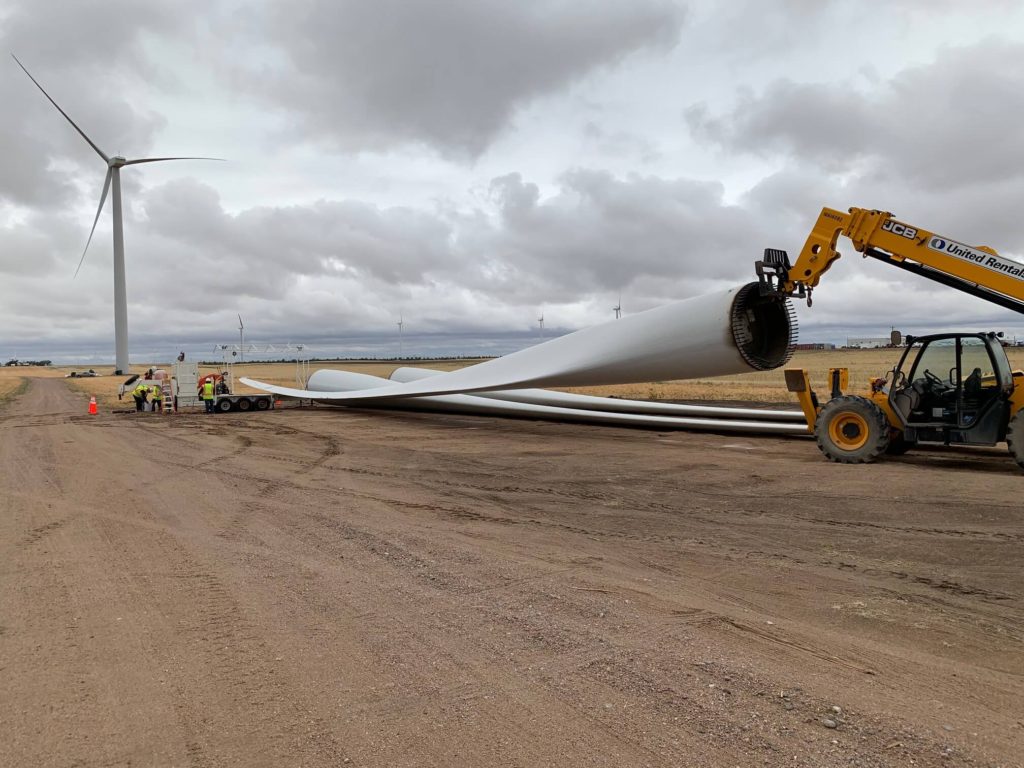
In the GE/Veolia partnership, one key area of focus is reviewing the whole CO2 chain involved in recycling, to make sure that all of the CO2 used throughout the recycling chain is accounted for, and that its approach is as efficient as possible.
Recycling Composite Wind Turbine Blades is a Tricky Business
Overcoming the logistical challenges of transportation with new shredding techniques and other innovations are just as critical to the solving the industry’s lifecycle and environmental problems as they are to avoiding a public relations meltdown.
As Europe continues to push the wind industry to meet more aggressive carbon- and emissions targets, Siemens announced it intends to make all of its blades fully recyclable by 2030 and its turbines fully recyclable by 2040. The European Commission also plans to review its landfill policies in 2024.
Veolia, GE, and Siemens are just three examples of companies that are making significant improvements in the recycling of wind turbine blades.
Knoxville, TN-based Carbon Rivers has proven its ability to break down the composite material in turbine blades so that it can be reused for specific purposes – and shown that it’s economically viable to do so – thanks to a multistage pyrolysis process. (The American Ceramic Society has more details on that.)
In September, the company announced that it had met its initial goal of upcycling 100 tons of turbine blades in a year and a half, and that its next goal is to upcycle 20 tons a day. Carbon Rivers says that in 2023 it expects to process 200 tons a day.
Although Siemens has not disclosed the name or manufacturer of the epoxy that has enabled the company’s significant improvement in recyclability, several chemical companies, including Arkema, have been working on advances in composite materials, with a focus on recycling wind turbine blades.
Improvement in wind turbine blade recycling and end-of-life disposal can’t come too soon, though. Real change demands a unified effort among private companies, research facilities, and regulatory bodies.
At the global scale, the cumulative total blade waste is expected to reach 2.9 Mt per year by 2050. ~ Wind Turbine Blade Waste, Pu Liu and Claire Y. Barlow, University of Cambridge
Weather Guard’s focus on lightning protection has proven to extend the lifespan of wind turbine blades to improve environmental sustainability and profit margins. While most blades can be expected to last about 20 years, many can be extended to 25 years. The longer existing blades operate reliably, total production costs go down, and earnings go up.
Better blade maintenance, better production
Also, the longer turbine blades last, the fewer blades are needed, worldwide.
Carbon Credits, Sustainability, and Improving Wind Farm ROI
For both environmental and financial reasons, the wind industry is moving quickly toward more sustainable ways to manage end-of-life for the massive turbine blades.
“The blades that we are seeing… typically weigh six to seven tons each. Each one of those blades can displace the use of coal in a cement kiln,” explains Veolia’s Howell.
“About five tons of coal can be displaced. Nearly three tons of silica gets displaced, and nearly two tons of limestone can also be displaced again, depending on the specific makeup of the blade.”
“In addition to the raw material displacement, there’s a CO2 offset capability somewhere between 25- to 28% of the materials identified in a wind turbine blade or biogenic, which means they’re non-greenhouse gas forming. So there’s a decarbonization benefit with using this material as a heat source to produce cement.” Find the full interview with Howell here.
Global Fiberglass Solutions, with offices in Germany, Hong Kong, and the US, boasts that 99% of turbine blades can be recycled. Probably just as appealing to turbine manufactures and energy producers is “future-proofing” against potential regulations or liabilities. As GFS not-so-subtly states, “recycling can lead to potential tax/carbon credits and better financing rates.”
Carbon offset credits and incentives in some countries mean recycling efforts can improve the bottom line for wind operations. But the bigger advantage may be in extending the productive life of your wind turbine blades.
In wind farming as in any business, the bottom line is always the bottom line.
Tune into the Uptime podcast to learn about the latest developments in wind energy technology and business. Questions about how to extend the life of your blades? Contact us.

